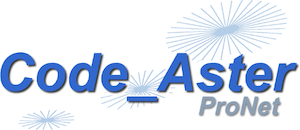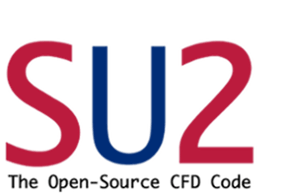We have covered a raft of CAD related articles on 12CAD.com. However, it is important to know that designing a product only serves as the first step in bringing it to life. In order for the product to survive the conditions of the environment and the application it is expected to fit in, it is incumbent on the designer to simulate those conditions in a software hence engendering the weaknesses and eliminating them before the product hits the manufacturing stage.
These conditions are simulated in a software aptly called as Finite Element Analysis (FEA). These softwares cater to far ranging applications from earthquake simulations to simulating downforce on a Formula 1 car’s rear wing hence calculating the stress the rear wing is able to sustain.
In this section, we offer 5 open source FEA softwares that you can choose from to meet your needs. So without further ado lets check those five softwares out.
Top Five Open-Source FEA softwares
Code Aster Review
 Code_Aster is an open source package, licensed free for Linux and BSD specifically meant for civil and structural engineering. Its core focus is on finite element analysis and numerical simulations in structural mechanics. Code_Aster was released as the current package in October, 2001.
Code_Aster is an open source package, licensed free for Linux and BSD specifically meant for civil and structural engineering. Its core focus is on finite element analysis and numerical simulations in structural mechanics. Code_Aster was released as the current package in October, 2001.
Based on the Finite Element Theory, Code_Aster is a mechanics problems solver. 3D thermal & mechanical analysis is one aspect of the package with linear and non-linear static and dynamic computational capability. It goes a step beyond the regular package with support for machines and components such as pressure valves. The package was developed based on research targeting structural fatigue, damage, fracture, contact etc. hence its application is prominent in maintenance of power plants and electrical networks.
Windows version of the package exists although at-least releases take a while to come out proper. Native to Linux, this is one of the industry-wide known and used packages in its field.
FreeFem++
FreeFem++ is a programming language and software focused on solving partial differential equations using finite element techniques. FreeFem++ is available as a free software distributed under the GPL, native to Linux and having been successfully ported to Solaris, OS X as well as Windows. The IDE for the language is FreeFem++-cs and the language of development is C++.
The fact that the software has its own programming language coming out of C++ is evident of the power and proves of this package. Not only can you draw and develop the design you want but you can further your development efforts by programmatically manipulating all the elements in the IDE. Scripting is available and macros can be recorded.
SU2 Code
 SU2 Code is a framework, not a package. But its fundamental approach is towards constrained optimization on partial differential equations. This allows us to apply the framework to computational fluid dynamics and aerodynamic shape optimization. Further developments have led to the applications scope to electrodynamics and chemically reacting flows. SU2 Code is a free and open source software, released under the GNU GPL for NIX and DOS based systems.
SU2 Code is a framework, not a package. But its fundamental approach is towards constrained optimization on partial differential equations. This allows us to apply the framework to computational fluid dynamics and aerodynamic shape optimization. Further developments have led to the applications scope to electrodynamics and chemically reacting flows. SU2 Code is a free and open source software, released under the GNU GPL for NIX and DOS based systems.
The tool suite includes high fidelity analysis and adjoint-based design capabilities. Compression-dependent solvers also including but not limited to convergence adaptive mesh refinement and deformations.
AutoCAD
Almost every CAD related article is incomplete without the Autodesk section, whether its product is up for review or is used as a benchmark. AutoCAD is the primary platform for development and design but the FEA extensions work seamlessly with it. The Simulation Mechanical allows you to work with solids in natural environments and their subsequent mechanical simulations. The events can be controlled to a very high degree allowing for a virtually completely controlled environment for executing the FEA as well as generating its documentation. Added with the BIM features, builders, manufacturers and constructors are going to have quite the time designing and fine tuning buildings for earthquakes and all.
The second module of the suite is the Computational Fluid Dynamics (w/ Viewer). It enables you to develop alternatives to the models as well as the test cases and environments. A huge variety of properties accessible through AutoCAD’s scripting interface provide much variety to customize the fluid to your requirements. The viewer allows you to access designs and models without the capability of editing them.
 The third part is titled MoldFlow. It’s meant to target the molding process and all its related simulations for plastics. A range of industry standard plastic profiles come installed for you to tinker with, with options for various techniques. Plugins and add-ins allow further extendibility.
The third part is titled MoldFlow. It’s meant to target the molding process and all its related simulations for plastics. A range of industry standard plastic profiles come installed for you to tinker with, with options for various techniques. Plugins and add-ins allow further extendibility.
A few other modules include the Robot Structural Analysis Professional package that allows engineers with tools and techniques with advanced BIM functionality coupled with design tools tweaked specially for code compliance. With it you can simulate on your station as well as on the cloud. A wide range of analysis criteria and Direct Analysis Method optimizes stability in design. Auto-meshing and structural modules, integrated solutions for concrete and steel. Further reporting features and API options make FEA-life a breeze.
SfePy
 SfePy is a BSD licensed NIX/DOS framework with extendability in mind. Written in Python, it is meant to target coupled partial differential equations using the finite element methods for 2D and 3D environments. It’s flexibility and wide range of application is its best feature, so whether you want to use it to build a custom application or you want to just analyze a single structure, your good to go. Time dependent variants are available in C/Cython giving you additional scripting access no matter what package you compile it with.
SfePy is a BSD licensed NIX/DOS framework with extendability in mind. Written in Python, it is meant to target coupled partial differential equations using the finite element methods for 2D and 3D environments. It’s flexibility and wide range of application is its best feature, so whether you want to use it to build a custom application or you want to just analyze a single structure, your good to go. Time dependent variants are available in C/Cython giving you additional scripting access no matter what package you compile it with.
Overview Comparison
| Code_Aster | FreeFem++ | SU2 Code | Autodesk suite | SfePy | |
| License | GNU GPL | GPL | GNU | Free | GNU |
| Native OS | NIX | All | All | Windows | Multi |
| Type | Package | Suite | Source | Package | Framework |
| Best feature | Numeric simulations | Variational formulation engine | Shape optimization | Documentation | Integrated control |


